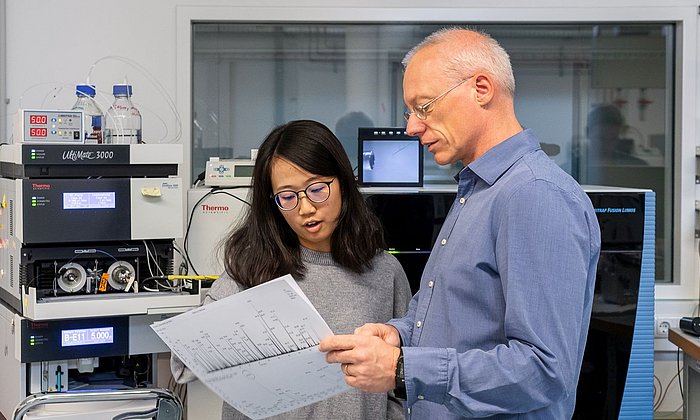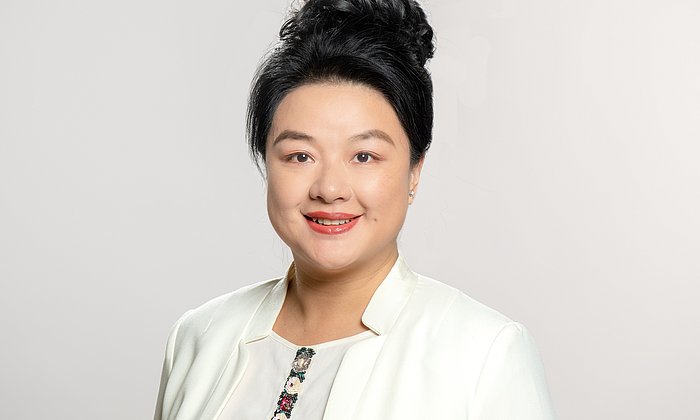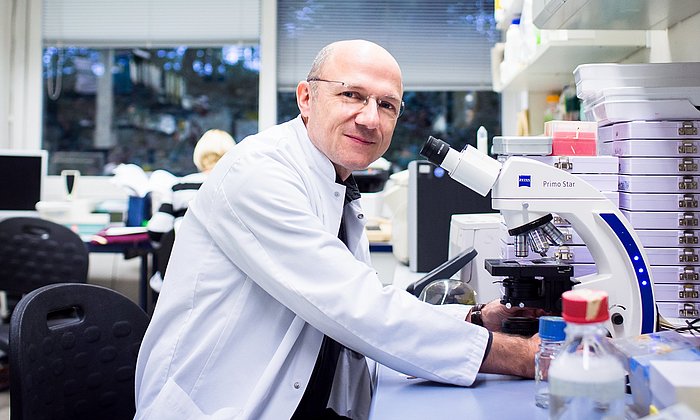NewIn: Hristo Svilenov
Proteins for tomorrow’s medicine
You do research and teach in the field of Biopharmaceutical Technology. What makes this kind of work unique?
We work with living cells that serve as miniature production plants. They produce proteins with specific properties that we can use as active drug ingredients. However, because cells are extremely sensitive to their environment, the challenge is to design processes and methods that are reliable and reproducible, so they consistently yield the desired quality and amount of protein. In the end, we want to create drugs that are not only effective but also have minimal side effects and good stability. That means they can be stored appropriately and do not break down too quickly in the body. This makes the development of biopharmaceuticals much more demanding compared to conventional medicines, which rely on small molecules created through chemical synthesis. These molecules are less complex, and their production is far easier to control and replicate.
Could biopharmaceuticals also help develop treatments for diseases that currently have no cure?
I see great potential to create therapies for conditions that are still untreatable. For instance, many powerful chemotherapy drugs come with serious side effects because they do not attack only the cause of the disease, but also healthy human cells. We hope these drugs can eventually be replaced with new, highly specific, and personalized biopharmaceuticals. That is why we are studying how various organisms in nature use proteins to fight disease and exploring the pharmaceutical potential of those proteins. This research lays the groundwork for future developments that industry might pick up and turn into treatments five or ten years from now.
How important is the translation aspect in your research?
For me, the ideal research project explores a new scientific territory and focuses on its potential benefits for medicine, whether by developing a technology or a new molecule. Basic research also allows you to try out completely new ideas and approach problems from a different angle than you would in industry. Of course, going into new research directions carries the risk that something might not work.
Is it frustrating not knowing from the start whether something will succeed?
Our work definitely follows a kind of “high-risk, high-reward” principle. Research does not always produce the outcome you hope for or expect. But when it does succeed, you have created something genuinely new that can help many people. In the field of antibiotic resistance, for example, I see real potential for breakthroughs that could move from basic research into the pharmaceutical industry and help solve a significant global challenge.
You are working on antibiotic resistance in a project where cows play a key role. Can you tell us more?
We are one of the first research groups worldwide to work on what are known as picobodies — tiny proteins found in the antibodies of certain cattle breeds. These mini-proteins were only discovered a few years ago, and we believe they could serve as the foundation for new antibacterial drugs. The project is funded by the European Research Council.
How could these cow antibodies help in the fight against antibiotic resistance?
Cows are ruminants, and because of their complex digestive systems, they are exposed to a wide variety of bacteria and pathogens. Their bodies must have evolved mechanisms to help them stay healthy. What we know so far about picobodies suggests they play a significant role in that. We are hoping to harness those properties. And the most exciting part? Each cow has millions of these tiny proteins. It is a vast, largely unexplored field where we can discover entirely new structures, sequences, and molecules.
You were at TUM during your postdoc and have returned as a professor. What stands out to you about working at TUM?
What always impresses me is the faculty. There are truly exceptional scientists here at TUM. Working with these people in this environment is highly motivating and inspiring. This is what makes TUM so special to me.
Hristo Svilenov is Professor of Biopharmaceutical Technology at TUM. He studied pharmacy at the Medical University of Sofia and earned his PhD in Pharmaceutical Technology from Ludwig-Maximilians-Universität Munich in 2019. After a postdoctoral stay at the Technical University of Munich (2020–2021), he was appointed Associate Professor at Ghent University. In 2023, he received the honorary title TUM Ambassador and returned to TUM as a professor in 2024. His research focuses on the development of new protein-based medicines. He received an ERC Starting Grant for the project 'Picobody' in 2024.
- The professorship of Biopharmaceutical Technology is part of the TUM School of Life Sciences.
- All episodes of the series NewIn
Contacts to this article:
Prof. Dr. Hristo Svilenov
Technical University of Munich
Professorship of Biopharmaceutical Technology
hristo.svilenov@tum.de



